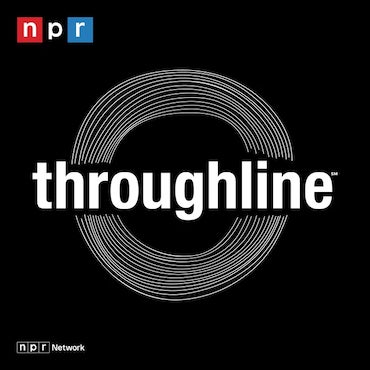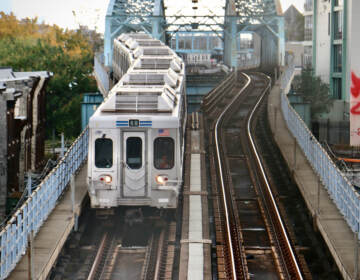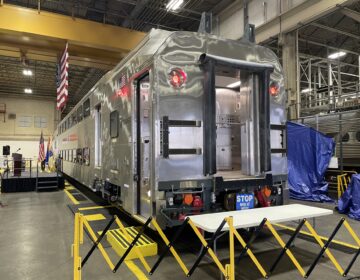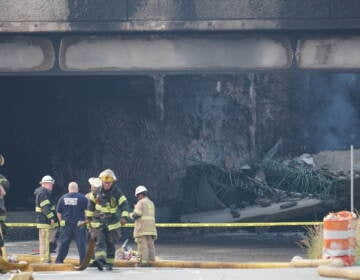Yo! regional rail riders, changes are in the wind
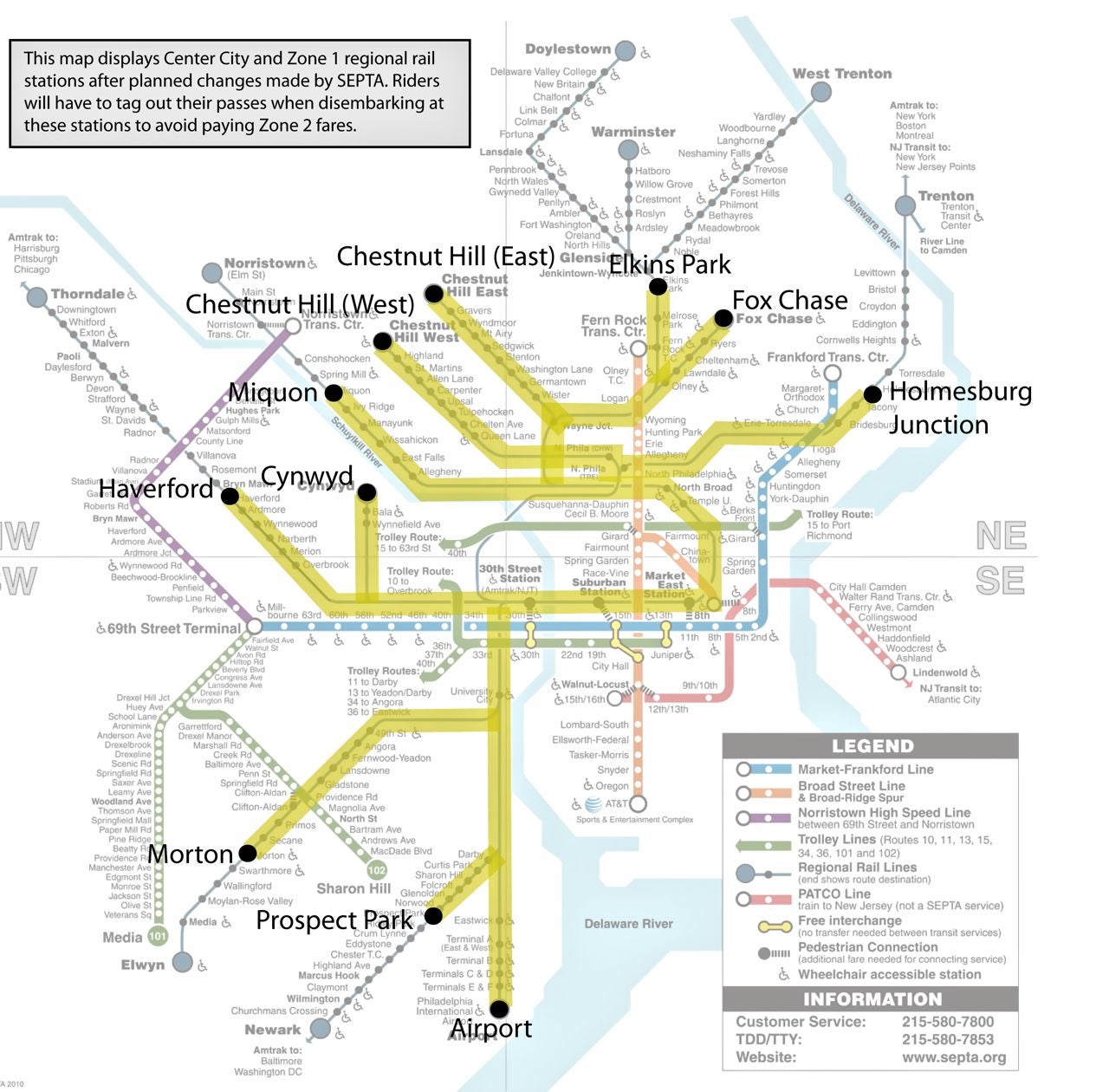
As SEPTA prepares to roll out a new smart card system, it is quietly moving forward with sweeping changes that promise to fundamentally reshape the regional rail system.
Many of these changes ― detailed in documents obtained through an open records request ― require public hearings and SEPTA board approval because they would significantly alter the railroad’s fare and tariff structure.
Yet it appears, from these documents, that SEPTA is planning on issuing a contract to implement the smart card system before holding public hearings or seeking the necessary board approval to implement these policy changes.
The documents, which consist of addenda to SEPTA’s request for proposals to build a smart card system and studies for implementing the system, fill 14 DVDs.
While the rollout of smart cards on buses, trolleys and subways would proceed as expected ― instead of using tokens or passes to pay their fares, riders will be able to use smart cards or other devices with radio tags ― the entire regional rail rider experience would be altered.
Under the current proposal, SEPTA will establish a so-called “tolled system” for riders. Instead of paying fares in both directions, riders will be able to take trains into Center City for free and will pay double when leaving Center City.
Though this proposal had been previously floated by John McGee, SEPTA’s chief officer of new payment technologies, SEPTA is also planning on implementing new fare collection methods. These methods will change depending on the zone to which riders are traveling.
Riders will be required to remember their zone’s particular fare collection policy in order to avoid being under- or over-charged.
The number of fare zones will also be cut down to three, with additional Center City and New Jersey zones.
Riders boarding at one of the five Center City stations ― University City, Temple University, 30th Street, Suburban and Market East stations ― will have to tap their smart cards on subway-style turnstiles that will restrict access to train platforms.
(In addition to smart cards, riders on the regional rail and transit systems will also be able to purchase one-ride tickets with a magnetic strip, similar to a single-ride Metrocard in New York City.)
To depart at another Center City station, riders will have to remember to tag out before passing through that station’s turnstiles.
Zone 1 riders ― which includes every station in the city except Torresdale, as well as the inner suburbs ― will need to remember to tap their smart cards on validators at stations to close their trips.
Center City and Zone 1 riders who fail to tap out properly will be charged Zone 2 prices.
Zone 2 riders won’t have to tap out.
Zone 3 and New Jersey riders will have their smart cards validated by conductors using new handheld devices.
Any riders whose smart cards fail to validate will pay Zone 2 prices. (It’s unclear which stations will be designated zones 2 and 3 under this plan.)
Outbound riders who board at stations other than Center City will have their passes validated on board.
SEPTA has also decided to scale back the number of new fare vending machines at regional rail stations. While previous plans called for the contractor that won the smart card bid to install machines at every station, vending machines will now only be installed at Center City and Airport stations.
The Norristown High Speed Line, 69th Street Terminal and the Norristown Transportation Center will be gated, though it’s unclear how service will run on the line.
SEPTA declined to comment on the plans beyond what’s in the documents. Spokeswoman Jerri Williams said the authority didn’t want to comment on a contract that’s in “active procurement.”
Though Francis Kelly, assistant general manager of government and public affairs, said that “we want to be as transparent as possible,” he said that the request for proposal for the project is “very volatile.” Williams added that the plans laid out in these documents are just “ideas.” “We ask you that you do not draw any conclusions from what you read,” Williams said.
While it’s true that SEPTA can still change its direction ― and the bidders have been instructed to design a system that would work without these fare and tariff changes ― the proposal seems fully fleshed out.
The three potential vendors identified in the documents ― ACS Transport Solutions Group, Cubic Transportation Systems Inc. and Scheidt & Bachmann USA Inc. ― have been instructed to include provisions for this regional rail operating scenario, and no other, in their final bids.
And SEPTA has provided detailed instructions for how the system will be run and what materials the contractor will have to provide. One addendum to the RFP, for instance, provides exact specifications of the kinds of railings and fencings required at stations.
It also appears SEPTA is running out of time to make major changes. SEPTA has plowed ahead with plans to construct the smart card system despite a loss in state subsidies. Final bids from the three vendors are due in the fall, and SEPTA hopes to award a final contract by early next year, according to an article in The Philadelphia Inquirer.
SEPTA is also applying for federal stimulus money, in the form of a TIGER grant, to pay for part of the implementation of the smart card system. That grant would only pay for building the smart card system’s back-end software and extending the card onto the Norristown High Speed Line, buses and trolley. The subways and regional rail wouldn’t be covered in this proposal.
The authority is also actively looking at ways of creatively funding the build-out of the system, and SEPTA has indicated in its RFP addenda that it will give preference to bidders who present plans to do that.
Though Williams said readers of these documents shouldn’t be “concerned,” transit advocates who have reviewed copies of them are outraged.
In a statement, Bob Clearfield, a vice chairman of SEPTA’s Citizen Advisory Committee, decried the process so far in developing the smart card system. He said the group “has not been involved in developing the new fare system in any meaningful way and therefore cannot give meaningful advice on the project as we are required to under statute.”
Clearfield also expressed “disappointment” that SEPTA had refused to grant the CAC access to this information and that briefings by SEPTA staffers involved with the smart card project “have been minimal.” “This is a once in a generation opportunity, and it needs to be done right,” he said.
Matt Mitchell of the Delaware Valley Association of Rail Passengers, a rider advocacy group, went further, saying the current proposal represents “a declaration of war on the customers.” He called on SEPTA to scrap its plans for regional rail until a more “rational” plan could be developed and to focus on implementation of the smart card on the transit side.
Mitchell criticized every aspect of the regional rail plan, saying that the smart card designers “have been suffering from tunnel vision.” In their efforts to eliminate revenue loss caused by conductors failing to collect fares on board trains, they have “introduced a whole host of additional problems.” He argued the new system will “infuriate” riders and cause confusion.
Zone 1 riders will be particularly burdened, Mitchell said, because they will be forced to tag out of the system to avoid being charged Zone 2 fares. This problem will be compounded if not enough validators are at stations to handle evening rush-hour trains. Riders, he argued, may be forced to either wait in line to tag out or eat the extra charge.
He pointed to the fact that, according to the documents, SEPTA had jettisoned a proposal to force all riders to tag out in favor of the current system. That move, Mitchell said, means that SEPTA knows forcing riders to tag out of the system is “folly.”
He’s also critical of plans to require conductors to validate Zone 3 and New Jersey riders by scanning their smart cards with handheld devices.
Because the majority of regional rail riders use weekly or monthly passes ― and thus only require a visual inspection from conductors ― the new system will increase the work of conductors. It will also, Mitchell said, be an inconvenience to riders and make it impossible to reduce crew sizes in the future as a way cutting costs and ultimately increasing service.
Mitchell expressed concern that gating Center City could cause problems with traffic flow in the stations ― especially during rush hour. Some rush hour trains have hundreds of riders getting on or off in Center City, and Mitchell is afraid that the sheer number could overwhelm the system and cause bottlenecks and possible hazards.
Finally, he said SEPTA would see revenue losses from riders who take free trips into Center City and then get rides out or take the bus. Instead of paying a full regional rail fare, such a trip could be accomplished with a $1.55 bus ride.
The plan provides “a legal way of evading fares,” Mitchell said.
Contact the reporter at acampisi@planphilly.com
WHYY is your source for fact-based, in-depth journalism and information. As a nonprofit organization, we rely on financial support from readers like you. Please give today.
